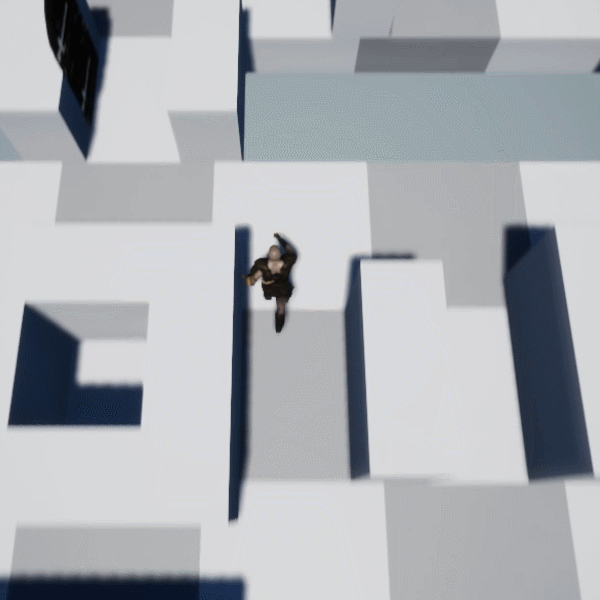Teseo Bros.
Unreal Engine 4, AI, Multiplayer
September, 2022 - In development
A multiplayer game where you must escape from the minotaur's labyrinth.

Teseo Bros is a multiplayer game developed in Unreal Engine 4 where two brothers,
Teseo and Leseo, must escape the labyrinth they are trapped in while fighting rats
and the mighty minotuar. This game was developed along with my colleage
Carmen Martín Moreno.
The repository of this project is private but temporary access may be
given to anyone interested in its implementation.
Contact me for more information.
What I did
- The minotaur's artificial intelligence using Behaviour Trees.
- The stimuli system so that the AI can see and hear the player.
- The character Teseo: movement, attack, shield, interactions.
- Core game loop: beginning of level, win conditions, life system.
Features
- Two distinct characters each with their own unique abilities.
- Online multiplayer with lobby.
- Full animations and sound.
- Full core game loop with win/lose state and main and pause menu.
- Interactable objects such as pickups, levers, doors and pressure plates.
- Enemies with complex AI behaviour that is able to see and hear you.
How I did it
Minotaur's Behaviour
The minotaur has a series of behaviours that depend on the stimuli it receives from the player. The three behaviours are:
- The minotaur patrols the labyrinth following a series of points. The route it follows dependes on the doors that are open and close. There are three doors in the level that connect the two parts of the labyrinth and the minotaur will calculate one patrol route or another depending on the state of each door.
- If the minotaur hears or loses sight of the player, it will start an investigation in the point where the stimulus was received. It will rush to the stimulus location and then select three random points in the vicinity to investigate.
- Whenever the minotaur sees the player, it will enter attack mode and rush to the player to be in melee range. If the minotaur is close enough, it will perform one of its three attacks depending on the relative position of the player. If it is not close enough, it will keep charging into the player.
The Behaviour Tree has three main branches, one for each behaviour: patrolling, investigating and attacking. The attack branch is the first in the tree (therefore it is the one with the most priority) and is activated whenever the minotaur sees the player. In this branch, the minotaur will first run into the player and then attack them.
The second branch is the investigation branch. It is activated when the minotaur loses sight of the player or when it hears the player somewhere. The minotaur will then rush to the location of the stimulus and launch an investigation to three points near that stimulus. These points are obtained using the Environment Query System (EQS) of Unreal.
Finally, the last branch of the behaviour tree is the patrolling branch. This branch does not have any condition to be activated, as it is the default behaviour of the minotaur. In this branch, the minotaurs first selects the next patrol point in its route and then moves to that point.